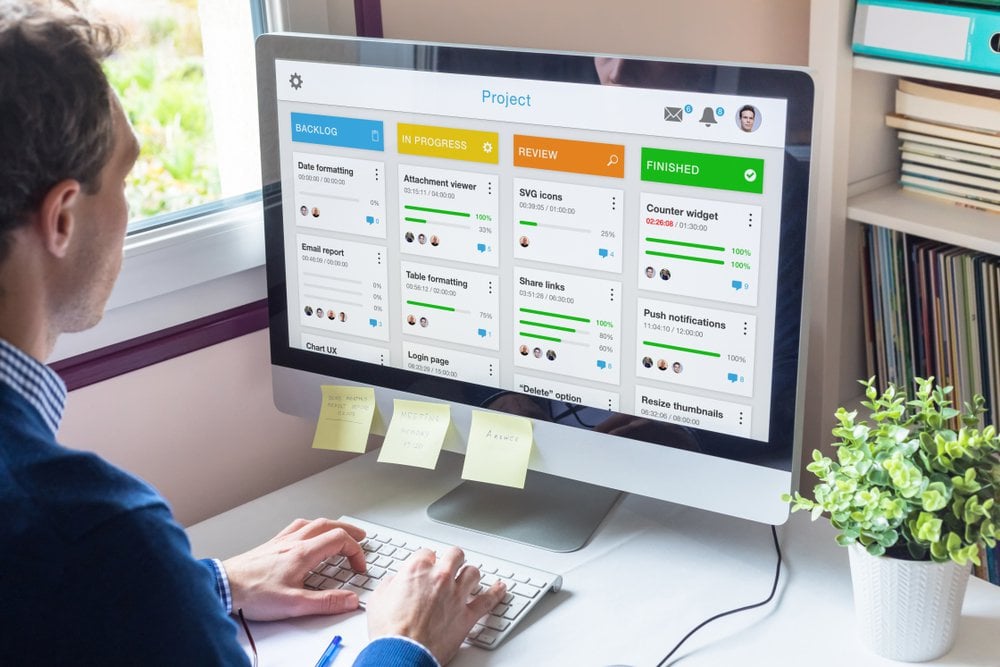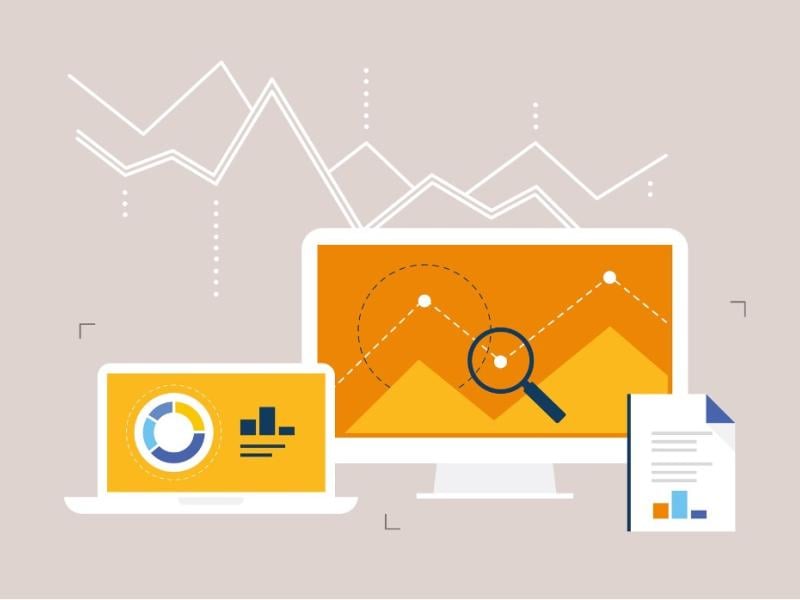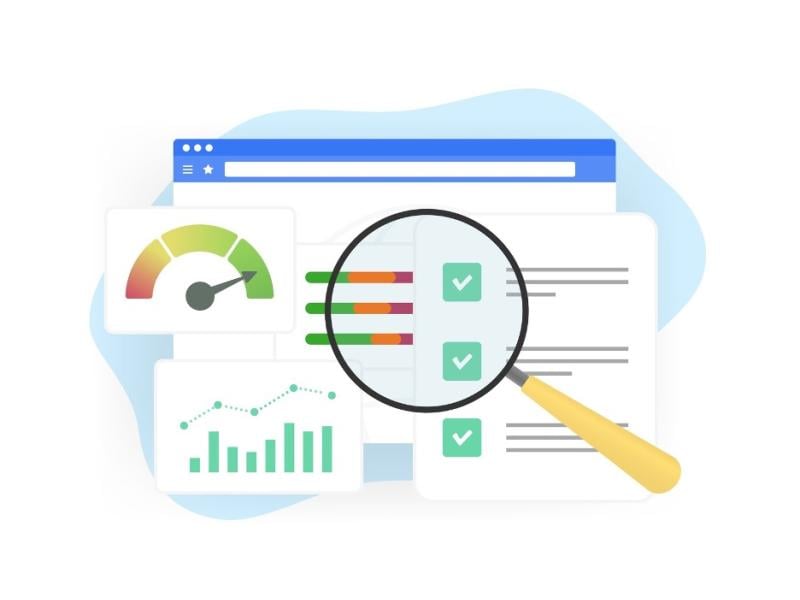To get from A to B, you need to know where you are, where you’re going, and how to get there. When it comes to achieving your website goals and developing or redesigning digital applications, a digital roadmap serves as your GPS. And in a world changing with the emergence of AI, a robust digital roadmap is critical that you are maximizing your finite resources, and leveraging the latest tools, for maximum digital value.
With a clear digital strategy, you can align your website goals and long-term organizational objectives with great success. In this comprehensive guide, we’ll explore the essential elements of an effective digital roadmap.
Manufacturing, associations, life science & healthcare industries often have complex needs that require multiple integrations and functions. Building on crucial experience with organizations in these key sectors, we look into the importance of data-driven decision-making, customer-centric website development, and strategic process automation across these industries to drive maximum return on investment (ROI). Most importantly, we also provide a step-by-step framework so you can develop a roadmap that will set you up for lasting wins.
What Are Digital Roadmaps for Website Planning?
A digital roadmap is a strategic plan that outlines the steps to take and milestones to reach as you develop and launch a website or digital product. It provides an overview of the project timeline, website goals, and key deliverables.
The purpose of a digital roadmap is to provide a clear, shared understanding of the project among stakeholders. It also helps align expectations and ensures the website or digital product is delivered on time and within budget. In short, it serves as a guiding document throughout the development process and can be updated as the project evolves.

Digital roadmaps are a vital part of creating tailored solutions for diverse verticals. In healthcare websites, for instance, they support ever-important compliance and promote effective patient engagement tools. Associations, on the other hand, may use digital roadmaps to enhance member engagement and advocacy efforts.
In the manufacturing sector, digital roadmaps help streamline product information and distributor access. And in life sciences, websites and applications use the clear and detailed strategic guide to ensure digital tools facilitate secure research collaboration and data dissemination. Unleashed is presently working with a life sciences client to map out its next stage of its digital presence, transitioning from its current simple HTML-based site to a website driven by a Content Management System (CMS) with more features and functionalities. Our client seeks this digital roadmap because it realized that to meet its research objectives, it needs physicians and patients to support its clinical trials, which requires a new approach and new website to attract these new stakeholders.
The Importance and Benefits of Digital Roadmaps
The benefits of a digital roadmap span far beyond defining website goals and a development timeline. They’re also essential factors that future-proof digital projects and ensure successful planning, development, and deployment. For instance:
Alignment and Clarity
A digital roadmap helps align stakeholders, teams, and executives around a shared vision and plan for the website or digital product. It provides a clear, common understanding of the website goals, project scope, and timeline.
Enhanced User Experience and Customer Interaction
Digital roadmaps ensure the website or digital product meets the evolving needs of customers and end-users. This is especially important in industries like healthcare, where patient-centric tools and portals need to deliver a seamless, personalized experience.
Keeps the Digital Strategy Aligned With Organizational Goals
Digital roadmaps support the highly mission-focused campaigns of associations and healthcare organizations. With clear direction, they help organizations adapt to compliance requirements and other changes without getting distracted from the end goal.
Effective Planning and Execution
A roadmap breaks down the project into phases and milestones for more effective planning, resource allocation, and execution. It also helps identify potential roadblocks and risks early on.
Flexibility and Adaptability
A digital roadmap isn’t set in stone. Rather, it can be updated as the project and business evolve. This allows for agile adjustments to changing requirements or market conditions while maintaining clear direction. For example, organizations in industries like manufacturing can easily shift their plans based on customer feedback.
Accountability and Transparency
The roadmap also serves as a central reference point, fostering accountability and transparency throughout the development process. It helps track progress, ensures all involved parties remain accountable for their area of responsibility, and keeps the project on course.
Streamlined Decision-Making
Digital roadmaps help companies prioritize clear initiatives and features. This is especially valuable for multi-stakeholder organizations, like associations, that need to align diverse priorities.
Improved Team Collaboration
Roadmaps enhance cross-departmental workflows and coordination in complex industries such as manufacturing and life sciences, where multiple teams must work together on digital initiatives.

How Digital Roadmaps Work
A customized roadmap ensures your organization’s website goals and digital initiatives align with your unique business strategy and objectives. This planned, methodical approach helps you achieve your goals more effectively. Specifically, it helps you identify the key priorities, features, and functionality that will drive the most value for your organization.
At a high level, your roadmap requires a current state assessment, future vision, and governance framework. Before you can start to develop a roadmap for your website goals, you must perform an in-depth analysis of your existing website. That is, review performance metrics, user behavior, and pain points. Once you’re clear on your current website standing and its shortfalls, you can identify gaps and determine what needs to change to achieve its desired future state.
Following a structured approach ensures your investments are tightly aligned with your business objectives to deliver maximum impact. When you involve key stakeholders in the roadmap development process, you can build consensus, address concerns, and secure the necessary support and resources to execute your digital plans successfully.
It’s important to keep in mind that your digital roadmap should be regularly reviewed and updated to adapt to changing market conditions, user needs, and technological advancements. This agility will allow you to stay ahead of the curve and continuously improve your online presence.
Key Elements of a Successful Digital Roadmap
While the specific elements of your roadmap will vary based on your organization’s goals and industry, there are three key components that are critical for success across industries. These include a strong data and analytics strategy, a relentless focus on the customer experience, and strategic process automation to drive efficiency.
1. Data and Analytics
A robust data and analytics strategy is crucial for an effective digital roadmap. When you closely monitor website traffic, user behavior, and key performance indicators (KPIs), you can make data-driven decisions to optimize the customer experience.
This is especially important for industries like healthcare, associations, manufacturing, and life sciences, where data-driven insights can inform everything from content strategy to feature prioritization. Data is the life-blood of Generative AI, and effectively organizing that data is key to maximizing the value of that data in support of your digital roadmap and overall business objectives.
2. Customer Experience
All digital roadmaps should aim to craft an exceptional customer experience. First, you must deeply understand your target audience, their pain points, and their preferences. Then, translate those insights into a seamless, intuitive website design and user flow. For example, healthcare and association websites might streamline appointment scheduling or membership management. In manufacturing, you could provide self-service resources and interactive tools.
3. Process Automation
Automating repetitive, time-consuming tasks can significantly boost efficiency and free up your team to focus on higher-value work. A digital roadmap should identify opportunities to automate processes such as lead generation, content publishing, and customer support. This can be especially impactful for industries with complex workflows, like healthcare and manufacturing, where automation can help reduce errors and improve consistency.
How To Develop a Website Roadmap
Creating an effective digital roadmap for your website requires a thoughtful, step-by-step process. This ensures you don’t miss any important aspects and sets you up for lasting success. Let’s walk through the key steps involved.
 1. Vision and Objectives
1. Vision and Objectives
Clearly define the overarching goals and vision for your website or online presence. For instance, you might aim to improve customer engagement, increase lead generation, or enhance brand awareness.
For healthcare institutions, it’s important to simplify and streamline patient access to medical information. Online appointment scheduling should also be a priority for modern practices and service providers who wish to remain competitive.
Manufacturing businesses will want to prioritize showcasing product offerings. Other key objectives might be to provide technical resources, enable online sales, and streamline distributor portals. Unleashed worked with a manufacturing client to prioritize and further personalize its relationships with its distributor network -- that was the client’s vision. We then worked with the client to provide further granularity in the objectives to support the vision, including building custom web portals for its distributors to facilitate product order history, payment options, and customer service connectivity.
Associations and life sciences organizations should ensure educational resources on research, clinical trials, and treatment options are easily accessible. Their online platforms should also foster community engagement, promote member benefits, increase membership, and facilitate online learning.
2. Conduct Audience Research and Journey
Mapping Develop detailed user personas to understand your target audience’s needs, behaviors, and pain points. In addition, map out the key touchpoints and interactions your users will have with your website and digital assets. For regulated industries such as healthcare and life sciences, ensure you understand the diverse needs of patients, researchers, and other stakeholders.
3. Define the Technical Architecture
Outline the core technology stack, integrations, and infrastructure required to support your website and digital initiatives. Consider industry-specific requirements, such as:
Manufacturing: Enterprise resource planning (ERP) system integration, secure payment methods, and industrial automation tools
Life Sciences: Compliance with regulatory standards (e.g., FDA, HIPAA) for data privacy and security
Associations: Member data privacy requirements and security of personal information
Healthcare: Secure patient data management and integration with electronic medical records (EMR) systems
4. Scope and Features
Determine the scope of the project to ensure you don’t get carried away with unnecessary add-ons before the primary goal is complete. Also, provide a clear picture of the core functionality and user experiences the website or digital application will provide. This includes specific features required to meet your website goals. For instance, if a manufacturing business sets out to enable or improve online sales, this section will outline the specific features and functionalities that will drive this outcome.
5. Develop the Content and Design Strategy
Determine the key content, messaging, and visual branding that will effectively communicate your value proposition and engage your audience. Ensure both content and design are tailored to your industry and brand’s unique offering and audience preferences.
6. Phased Implementation Plan
Set realistic timelines for each phase of the project to help ensure minimal disruption to regular business operations. Break down the project into manageable phases with clear milestones, timelines, specific deadlines, and checkpoints. Also, establish KPIs and a plan to continuously monitor, analyze, and optimize performance.

Rank features and functionality based on their impact and feasibility. Ensure your phased approach prioritizes the smooth running of critical features before focusing on “nice-to-haves.”
7. Resource Requirements
As accurately as possible, determine the budget, team, and other resources needed to complete the project. Leave some room for adjustments and problem-solving as these are an inevitable part of the process. Ensure your team is knowledgeable, skilled, and professional with a good track record of successful digital project development.
In addition, consider specialist consultations to ensure your digital applications meet industry requirements and remain compliant. This will help you avoid penalties and other serious consequences down the line.
8. Stakeholder Alignment
Ensure buy-in and alignment from key stakeholders across your organization, such as executives, department heads, IT, marketing, and other relevant teams. This helps secure the necessary resources, budget, and support to execute your digital roadmap successfully.
9. Risk Mitigation
Identify potential challenges or roadblocks that could impact your digital initiatives, like technical limitations, regulatory requirements, budget constraints, or resource availability. Then, develop contingency plans and mitigation strategies to address these risks and ensure the project stays on track.
10. Assign Tasks and Responsibilities
Allocate specific tasks and responsibilities to your project team to ensure clear ownership and accountability. Determine the necessary skills, resources, and expertise required for each phase of the roadmap. Also, set a clear communication strategy and protocols in place for teams to communicate effectively across project phases and functions.
11. Review and Revise the Roadmap
Regularly review the roadmap to assess progress, identify any necessary adjustments, and ensure it stays in line with your organization’s evolving needs and priorities. Incorporate feedback from both stakeholders and end-users to continuously improve the roadmap and your digital initiatives.
Achieving Your Website Goals: A Roadmap to Success
The key to meeting your website goals is to take a holistic view. Consider not just the technical requirements but also your customers’ needs, your team’s capabilities, and the competitive landscape of your industry. Whether you’re in manufacturing, associations, life sciences, or healthcare, a well-crafted digital roadmap can help you:
- Make data-driven decisions to optimize the customer experience
- Streamline operations and boost efficiency through strategic automation
- Stay agile and adjust to changing market conditions
- Ensure your digital initiatives are tightly aligned with your organizational objectives
At Unleashed Technologies, we have a proven track record of helping clients across diverse industries develop and execute transformative digital roadmaps. Our team of experts can guide you through every step of the process, from initial assessment to ongoing optimization. This ensures you unlock the full potential of your website and digital assets.
Let’s connect and explore how a strategic digital roadmap can drive your business forward.


